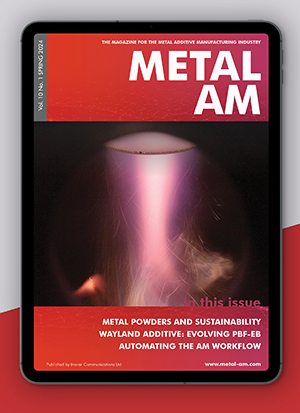Fabrisonic’s SmartPlate measures build plate load
February 3, 2023

Fabrisonic LLC, Columbus, Ohio, USA, has introduced SmartPlate, a build plate with embedded sensors bespoke to customer requirements, which can extract data for real-time or post-processing analysis.
The SmartPlate was built in response to a challenge posed by Fabrisonic collaborator EWI Inc, headquartered in Columbus, Ohio, USA. The company had asked the question, “How can the loads going through the build plate during the Additive Manufacturing process be measured?” In response, Fabrisonic developed the concept for the new plate, then began the construction with the help of EWI and Luna Innovations, a supplier of fibre optic sensors based in Roanoke, Virginia, USA.
To create the SmartPlate, Fabrisonic begins with a billet build plate and mills channels in locations where sensors are to be embedded. Sensors are placed in the milled cavities and Fabrisonic uses its ultrasonic Additive Manufacturing process to apply solid metal over the sensor. The low-temperature process does not harm the sensors; thus, the metal has continuous, contiguous, and direct contact with these sensors. When the product is completed, the SmartPlate is a fully consolidated metal plate with integral sensors buried within it.
To test the concept, the team put the SmartPlate in EWI’s Powder Bed Fusion AM machines and began a build that included ‘highly problematic features.’ The team found that the device picked up significantly more information from this initial build than the bulk stress state. Among some of the additional data that was uncovered were:
- The resolution and scan rate was high enough to discern the scan strategy of each layer
- Defects appeared as large compressive strains that formed early in the build at localised points
- Slow delamination of a specific feature was seen in the data even though the recoater blade never hit the build
A video posted by Fabrisonic shows actual strain-time plots resolved in the x-y plane and the raw data along the length of the fibre. Colourful strain-time histories communicate what is happening in the build. Further data analysis can provide a deep understanding of the quality of the build by analysing individual ‘pixels’ for sudden vector changes and comparing time histories of adjacent pixels.
Fabrisonic is continuing to evolve the concept of the SmartPlate by adding various sensors, including thermocouples and vibration sensors. The team recently upgraded an EOS M290 for further investigations in quality monitoring.
Download Metal AM magazine

















